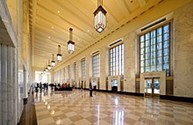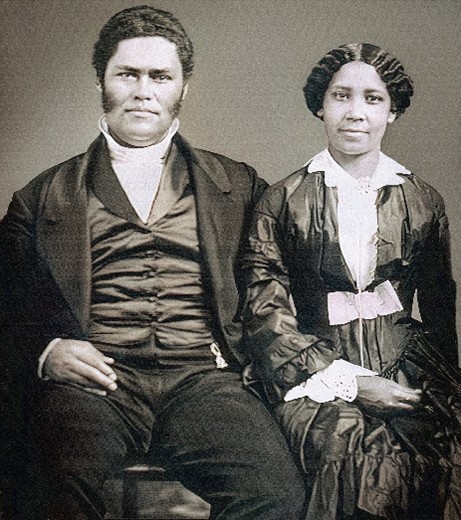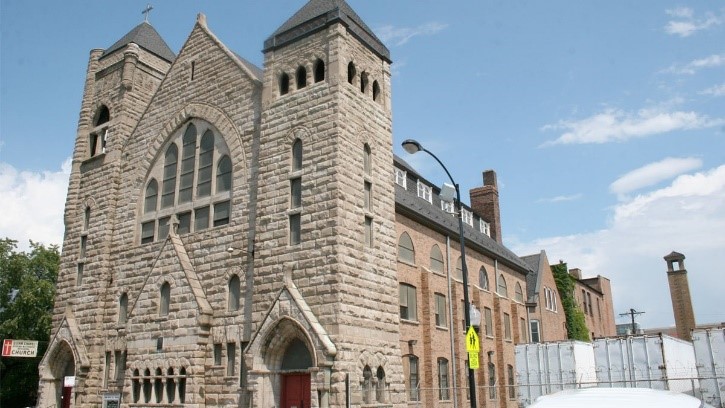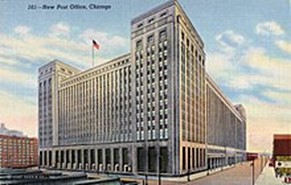Black History Landmarks of Chicago
As we start to close out Black History Month and head into March, we here at Willard Jones have decided to look at some of Chicago’s most iconic Black Cultural Landmarks. With a history as rich and colorful as Chicago’s, it can be easy for us to overlook some of the landmarks that have given our city and country such a strong identity, so today we would like to highlight some of those for you.
Grab a cup of coffee or your favorite snack and join us as we embark on a journey through time, uncovering the stories behind these cherished landmarks and celebrating their enduring significance in weaving the cultural tapestry of our city.
John and Mary House:
The Site of the John & Mary Jones House in Chicago, located at 45th Street and Vincennes Avenue in Bronzeville, embodies the enduring legacy of African American activism and leadership. Formerly the residence of John and Mary Jones, the house served as a pivotal center for civil rights organizing and community empowerment.
John Jones, a former slave turned successful businessperson and abolitionist, alongside his wife Mary, fostered a hub of social justice initiatives, including involvement in the Underground Railroad and advocacy for education and suffrage. Though the physical structure no longer stands, the site remains a symbol of African American resilience and the ongoing struggle for equality, reminding us of the profound impact of Black leaders in shaping Chicago’s history and the broader American narrative.
Quinn Chapel
Nestled in Chicago’s Bronzeville neighborhood, the Quinn Chapel African Methodist Episcopal Church is a venerable symbol of African American history in Chicago.
Well before the Emancipation Proclamation, Quinn Chapel played a pivotal role in Chicago’s abolition movement and served as a vital “station” along the Underground Railroad. Over the years, it has welcomed esteemed figures such as Presidents William B. McKinley and William Howard Taft, educators George Washington Carver and Booker T. Washington, poet Paul Lawrence Dunbar, and renowned preachers like Rev. Martin Luther King, Sr., Dr. Martin Luther King, Jr., and Rev. Adam Clayton Powell, Jr.
More recently, Quinn Chapel has hosted prominent political figures including Governor Rod Blagojevich, Mayor Richard M. Daley, Congressmen Danny K. Davis and Bobby Rush, Jesse Jackson, Jr., Governor Pat Quinn, and Senator Barack Obama.
Additionally, Quinn Chapel counted among its members Milton Olive III, a posthumous recipient of the Congressional Medal of Honor, and remains an enduring symbol of resilience and community leadership.

The Old Post Office at 433 W Van Buren
Our final landmark of note is the Old Post Office at 433 W Van Buren in Chicago. Originally built in the 1920s, this architectural marvel served as a bustling hub for postal activities in the city for decades. However, its historical significance extends beyond its structural grandeur. During the era of segregation and Jim Crow laws, Black postal workers faced immense challenges in pursuing their careers and contributing to the postal service’s operations. Despite systemic discrimination, many Black individuals persevered, working within the Old Post Office, and making invaluable contributions to its functioning.
The Old Chicago Main Post Office Building served as a crucial employment hub for African American Chicagoans, with many initially hired as temporary workers during the Depression, among them the renowned author Richard Wright. The National Alliance of Postal Workers, an African American union established in 1911 in St. Louis, played a pivotal role in challenging prejudice within the postal system. In Chicago, the union advocated for “color-blind” job applications and sought improved job opportunities for Black workers within the postal system. Over time, the union gained considerable influence, culminating in the historic promotion of Henry Wadsworth McGee as Postmaster of the Chicago post office in 1966, marking him as the first African American to hold such a position in a major metropolitan post office in the United States.
Today, the Old Post Office stands as a testament to the resilience and tenacity of Black individuals in the face of systemic barriers. Its revitalization and adaptive reuse reflect not only the city’s commitment to preserving its architectural heritage but also honoring the contributions of Black Americans to its cultural and economic fabric. As Chicago continues to evolve, the Old Post Office serves as a reminder of the struggles and triumphs of the past, inspiring future generations to strive for equality, justice, and opportunity for all.
We hope you’ve enjoyed and learned something from this special edition of the WJ Blog! Remember that Black History month doesn’t just end in February, so we hope you can take a moment to reflect on the very real ongoing struggles for Black Americans, as well as other communities of color and marginalized members of our society.
Let us take time to remember that to create a better society we must learn from the mistakes of our past and collectively recognize that the scars of years past can and do still influence the generations ahead. Please be sure to support communities of color this and every month in any and every way you can, whether it be supporting Black-owned businesses or otherwise.
Sources/Citations:
- https://www.chicago.gov/content/dam/city/depts/zlup/Historic_Preservation/Publications/Site_of_the_John_and_Mary_Jones_House.pdf
- https://en.wikipedia.org/wiki/Site_of_the_John_and_Mary_Jones_House
- https://webapps1.chicago.gov/landmarksweb/web/landmarkdetails.htm?lanId=11381
- https://quinnchicago.org/
- https://quinnchicago.org/history/#:~:text=Quinn%20Chapel%20is%20rich%20in,Provident%20hospital%2C%20and%20Elam%20House.
- https://interactive.wttw.com/dusable-to-obama/quinn-chapel
- https://www.chipublib.org/fa-quinn-chapel-a-m-e-church-archives/
- https://post433.com/about/
- https://en.wikipedia.org/wiki/Old_Chicago_Main_Post_Office
- https://www.chicago.gov/content/dam/city/depts/zlup/Historic_Preservation/Publications/Old_Chicago_Main_Post_Office_Bldg.pdf
Links to support Black Owned Businesses in Chicago
- https://do312.com/p/how-to-support-black-owned-businesses-in-chicago
- https://news.wttw.com/2024/02/02/your-guide-black-history-month-events-chicago
- https://docs.google.com/spreadsheets/u/1/d/1WBp1YIj8kWT6Km4eugnDmwMH5AWfSVU1z5CCdqCkkXI/htmlview



